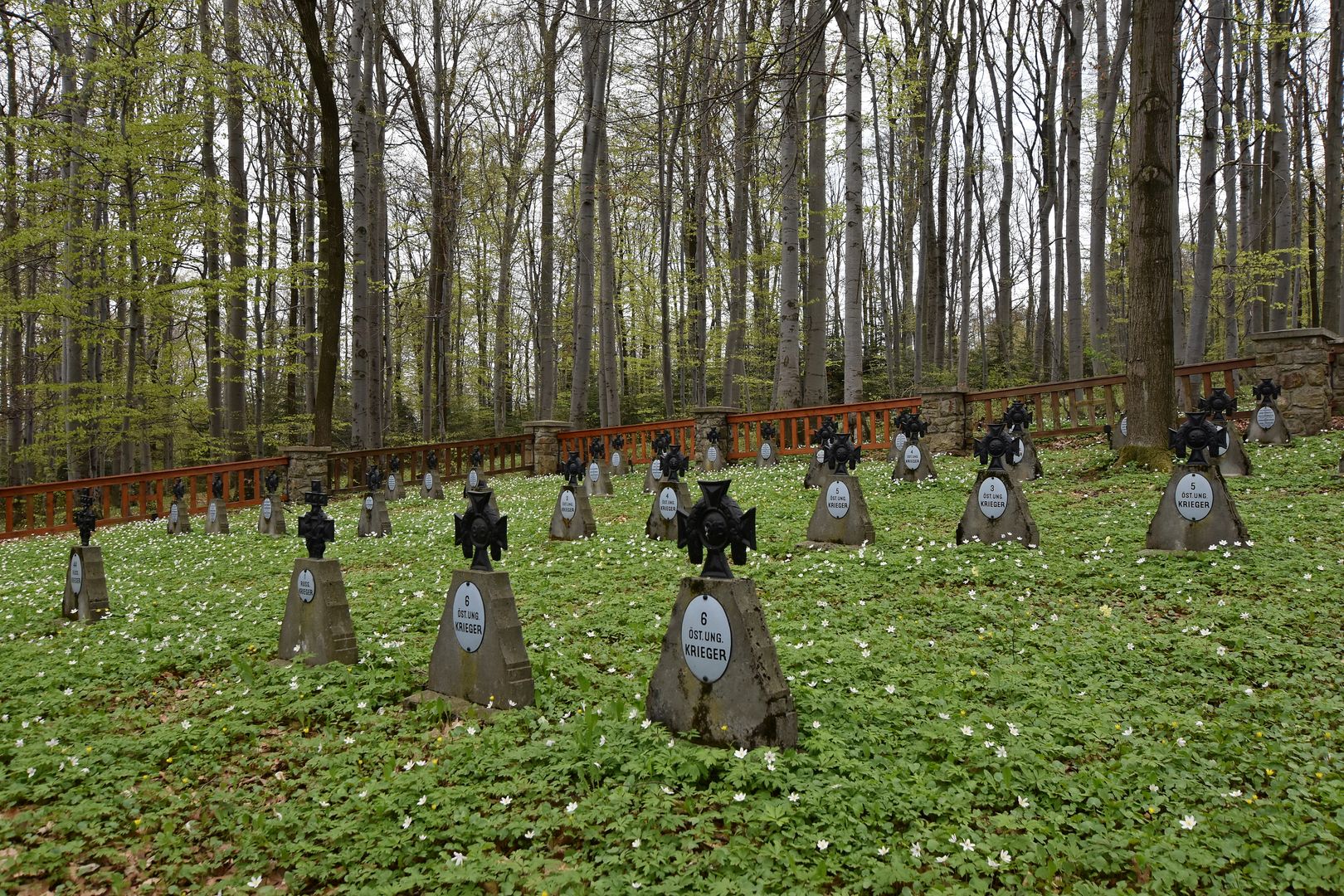War Cemetery No. 187 – Lichwin
7.17

Overview
War Cemetery No. 187 in Lichwin, located in the Lesser Poland Voivodeship, is an important memorial site dedicated to 199 Austro-Hungarian and 138 Russian soldiers who fell during the Battle of Gorlice on May 2, 1915. The cemetery contains the graves of soldiers from both the Austro-Hungarian and Russian armies, with 130 of them identified, primarily from the 14th Infantry Regiment and the 2nd Regiment of the Imperial Tyrolean Rifles.
Designed by Heinrich Scholz, the cemetery is laid out in a rectangular plan and enclosed by a wall made of stone pillars and a balustrade fence. The entrance is adorned with a double-winged wooden gate featuring hoplite sculptures, while the central element is a wooden cross on a pyramid-shaped stone pedestal, surrounded by a path leading to the graves. The tombstones take the form of concrete steles with cast-iron crosses and enameled plaques bearing the names of the fallen.
As part of the Western Galician network of war cemeteries, the site underwent extensive reconstruction between 1997 and 1998, which helped preserve its original appearance, including its characteristic wooden details. Despite the difficult period after World War II, when the cemetery fell into disrepair, it was successfully restored through cooperation with local authorities and associations dedicated to the care of war graves.
By 2014, the cemetery was in good condition, although four cast-iron crosses were missing from the tombstones. Its location, nestled in a forest near an asphalt road, makes it a valuable yet somewhat forgotten place, emphasizing its role as a site for historical reflection. War Cemetery No. 187 in Lichwin is not only a symbol of remembrance for the fallen but also an example of architecture that reflects the historical events of World War I and their impact on the region.
Location
2025 Wizytor | All Rights Reserved